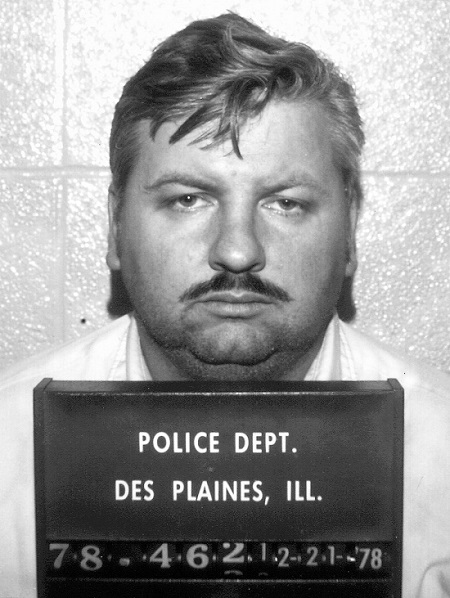Michael Gacy was a notorious serial killer who terrorized the city of Chicago, Illinois during the 1970s. Despite his charming and outgoing demeanor, he was responsible for the brutal murders of 33 young men and boys. In this blog, we will delve into the life and mind of John Wayne Gacy’s son, Michael Gacy, exploring the various factors that led to his descent into depravity.
Michael Gacy Childhood and Early Life
Gacy was born on March 17, 1942, in Chicago, Illinois. He was the second of three children born to a World War II veteran father and Marion Elaine Robinson Gacy. His childhood was marked by a tumultuous relationship with his physically and emotionally abusive father. H often beat him and berated him for not being manly enough. His mother was often absent from the home, leaving him with few allies in his family.
In addition to his troubled home life, he has also struggled with his sexuality from a young age. He knew he was attracted to other boys, but he was afraid to reveal his feelings due to the shame and stigma attached to homosexuality at the time. This internal struggle created a deep sense of anxiety and self-loathing that would plague him throughout his life.
Michael Gacy Jobs and Career
After leaving high school, Gacy held various jobs, including working as a mortuary assistant in Las Vegas. He was managing three Kentucky Fried Chicken restaurants in Waterloo. It was during his time working in the mortuary that he began to develop a fascination with death and the macabre. He would often spend hours alone in the embalming room, surrounded by the bodies of the deceased.
Later, when he became a manager at KFC, he used his position of authority to manipulate and abuse his employees. He would often force them to engage in sexual acts with him or perform humiliating tasks for his amusement. His coworkers and superiors were largely unaware of his behavior, as he was able to maintain a façade of normalcy in public.
The Murders and Capture
Gacy’s first known murder occurred in 1972 when he lured a teenage boy named Timothy McCoy into his car and took him back to his house. There, he sexually assaulted and strangled McCoy, burying his body under the crawlspace of his home. Over the next six years, Gacy would go on to kill 32 more young men and boys, burying their bodies in the same crawlspace or dumping them in nearby rivers.
Despite his prolific killing spree, he was able to evade detection for years. It wasn’t until 1978 that a 15-year-old boy named Robert Piest went missing after going to Gacy’s house for a job interview. The police began to suspect him of foul play. After obtaining a search warrant, they discovered the bodies of several of Gacy’s victims in his crawlspace. He was arrested and charged with 33 counts of murder.
Also Read: Ray McNeil Autopsy Photos: The Truth Story of Killer Sally’s Wife
The Mind of a Serial Killer

The case of Michael Gacy has been the subject of much speculation and analysis by psychologists and criminologists. Many experts believe that Gacy’s childhood trauma and struggles with his sexuality were key factors in his development as a serial killer. They argue that his abusive father instilled in him a deep sense of shame and inadequacy. While his sexuality made him feel like an outcast and fueled his desire for power and control over others.
Others point to Gacy’s work in the mortuary and KFC industries as contributing factors to his violent behavior. They argue that his exposure to death and decay desensitized him to the value of human life. While his position of authority allowed him to exercise his sadistic tendencies without fear of repercussion.
Some theories suggest that serial killers like Gacy are born with a predisposition toward violence. And that their upbringing and environment only serve to exacerbate these tendencies. Others argue that serial killers are made, not born. And that their violent behavior is a product of their life experiences and circumstances.
Regardless of the cause, the case of Michael Gacy serves as a chilling reminder of the dark potential that exists within the human psyche. It is a stark reminder that even the most seemingly normal and charming individuals are capable of unspeakable acts of violence.
Conclusion
In conclusion, the life and crimes of Michael Gacy offer a glimpse into the mind of a serial killer. His troubled childhood, coupled with his exposure to death and decay. As well as his position of authority over others played a role in his descent into depravity. As a society, we must continue to study and explore the minds of serial killers in order to gain a better understanding of what drives them to commit such heinous acts. Only by understanding the factors that contribute to their behavior can we hope to prevent future tragedies.
In the end, the case of John Wayne Gacy’s son, Michael Gacy serves as a cautionary tale. A reminder that even the most unsuspecting individuals are capable of unimaginable evil. We must remain vigilant in our efforts to identify and stop those who would seek to do us harm, lest we fall victim to their twisted desires.

